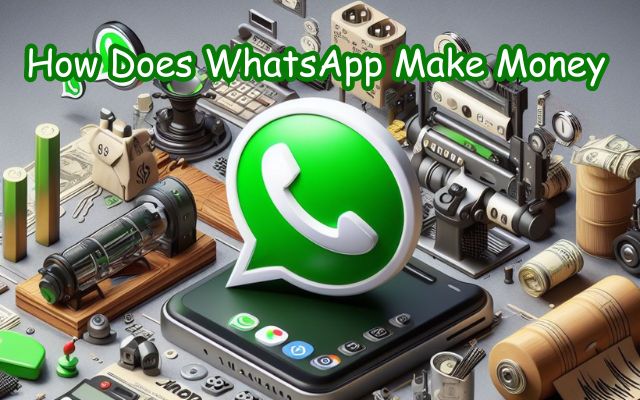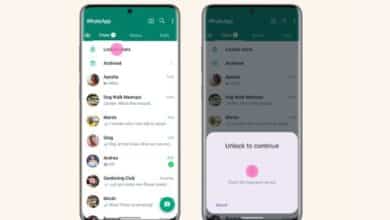How Does WhatsApp Make Money?
Decoding WhatsApp’s Revenue Generation: Past, Present, and Future Strategies

In the realm of instant messaging, WhatsApp stands as a titan among giants. With over two billion users worldwide, it’s a platform that many of us use daily. But have you ever stopped to wonder, “How does WhatsApp make money?”
WhatsApp was launched in 2009 as a simple, ad-free platform. Its primary focus was to provide a seamless and user-friendly experience. This approach was a breath of fresh air in an era where most free apps were riddled with advertisements. But this leads us to an intriguing question: without ads, what is WhatsApp’s revenue model?
The answer lies in its unique business strategy. Unlike other social media platforms that rely heavily on ad revenue, WhatsApp has always been different. It initially charged a nominal subscription fee, which was later scrapped. Post its acquisition by Facebook, new monetization strategies have been explored, including the potential for revenue generation through WhatsApp for Business.
In this article, we will delve deeper into the various strategies that WhatsApp employs to generate income. We will explore its past methods, present techniques, and potential future plans. So, if you’ve ever wondered about the financial workings of this popular app, stay tuned for an enlightening journey into the world of WhatsApp’s monetization.
WhatsApp’s Business Model
WhatsApp, a titan in the realm of instant messaging, has a unique business model that sets it apart from other social media platforms. It operates as a multi-sided platform, connecting users who want to message each other securely and freely, regardless of their cellphone operating system.
In its early days, WhatsApp was a paid service. Users were charged an annual subscription fee, which was paid at the time of installing the app. This model was in place when WhatsApp had around 700 million users. However, in January 2016, the subscription model came to an end, leaving WhatsApp with no apparent revenue stream.
The question then arises: how does WhatsApp make money now? The answer lies in its evolution. WhatsApp has recently added businesses as its customers. This shift marked a significant change in WhatsApp’s business model. Instead of monetizing its users directly, WhatsApp began to focus on providing services to businesses.
Today, WhatsApp makes money by charging large and medium enterprises for using its Business API. This allows businesses to communicate with their customers directly through the app, providing a new avenue for customer engagement.
Despite these changes, WhatsApp has remained committed to its original promise of providing an ad-free experience for its users. This commitment, coupled with its innovative approaches to revenue generation, makes WhatsApp’s business model a fascinating case study in the world of social media platforms.
Monetization Strategy: Past and Present
WhatsApp’s monetization strategy has undergone a noteworthy evolution since its inception. Initially, the messaging platform adopted a subscription-based model, where users paid approximately $1 for the app download and an additional $11 annually. At its peak, under this model, WhatsApp boasted a user base of around 700 million worldwide, translating to an estimated yearly revenue of $700 million.
However, in January 2016, following Facebook’s acquisition of WhatsApp in 2014, a shift in the monetization approach became apparent. Facebook, in a 10-Q filing, disclosed that WhatsApp was monetized in a “very limited fashion,” suggesting an imminent change in strategy. Shortly after, WhatsApp declared the end of its subscription era, making the messaging service free to use.
This pivotal shift in monetization strategy marked a redirection towards businesses. WhatsApp introduced the Business API, enabling direct communication between businesses and customers through the app. This innovation created a new revenue stream, with WhatsApp charging businesses for tardy responses to customer inquiries. Businesses responding beyond a 24-hour window now incur a charge ranging from $0.003 to $0.005 per message.
Furthermore, WhatsApp has explored the potential of in-app purchases and advertisements as future revenue sources. The envisioned strategy involves capitalizing on its highly engaged user base by selling advertising space to companies. However, as of now, the platform remains ad-free, with no implemented advertisements.
WhatsApp’s monetization strategy has transitioned from a subscription-based model to a concentrated focus on facilitating business communication. The company actively explores diverse avenues for revenue generation while upholding its commitment to delivering an ad-free experience for its users.
Revenue through Subscription Fees
In its early days, WhatsApp embraced a distinctive subscription-based model, diverging from the prevalent trend of free apps supported by advertisements. Users initially incurred a nominal cost of $1 for downloading the app, with an additional annual fee of $11. This model garnered substantial success, amassing a user base of approximately 700 million worldwide and generating an estimated annual revenue of $700 million.
However, in January 2016, a pivotal shift in strategy unfolded as Facebook, having acquired WhatsApp in 2014, hinted at a strategic adjustment. Subsequently, WhatsApp officially declared the termination of its subscription-based revenue model, transitioning to a free-to-use platform. This marked a profound transformation in WhatsApp’s approach to monetization, moving away from direct user payments towards a focus on catering to businesses.
The decision to abandon subscription fees was underpinned by the belief that a broader user base could yield heightened revenue prospects over the long term. With this shift, WhatsApp repositioned itself to offer services to businesses, aiming to capitalize on the increasing user engagement and interaction within the platform.
Despite the cessation of subscription fees, WhatsApp adhered steadfastly to its commitment to provide users with an ad-free experience. This dedication to preserving user satisfaction, coupled with innovative strategies for revenue generation, has been instrumental in sustaining WhatsApp’s growth and perpetuating its popularity. The strategic realignment underscores WhatsApp’s adaptability in navigating the evolving dynamics of the tech industry, positioning itself for sustained success in a competitive landscape.
Potential Revenue Sources: Ads and WhatsApp for Business
In the pursuit of monetization, WhatsApp has explored diverse avenues. A significant shift in their strategy includes the introduction of WhatsApp for Business, allowing businesses direct communication with customers through the app. WhatsApp generates revenue by charging businesses for usage after 1,000 conversations. Industries like banking, insurance, retail, and emerging sectors such as travel and education contribute significantly to the messaging app’s business offerings.
WhatsApp plans to launch premium services within their small business app, enabling businesses to manage chats across up to 10 devices and utilize customizable WhatsApp click-to-chat links. This move aims to garner incremental revenue from these paid features.
Speculation also surrounds the potential introduction of ads. Reports suggest Facebook may introduce ads in WhatsApp through the status feature and post ads on Facebook, redirecting users to WhatsApp business accounts. However, as of now, no ads are present in the app.
Additionally, WhatsApp has ventured into payments, introducing WhatsApp Pay in its largest markets, India and Brazil. This feature allows users to send money to each other through the app, presenting another potential avenue for revenue generation.
WhatsApp has been innovative in exploring revenue sources, from the introduction of WhatsApp for Business to the speculation of ads and the incorporation of payment features.
The Future of WhatsApp: Possible Monetization Strategies
As WhatsApp evolves, it is exploring new avenues for revenue generation. One key focus is attracting large businesses worldwide to utilize WhatsApp for customer interactions. Companies pay varying fees per conversation based on the chat type and country, aiming to transform WhatsApp’s massive user base into a significant source of revenue.
WhatsApp plans to roll out premium services within their small business app. These services would enable businesses to manage chats across up to 10 devices and utilize customizable WhatsApp click-to-chat links. This strategic move aims to generate incremental revenue from paid features.
Another potential revenue source under consideration is the introduction of ads. Reports suggest that Facebook may introduce ads in WhatsApp through the status feature and post ads on Facebook, redirecting users to WhatsApp business accounts for further engagement. However, as of now, there are no ads in the app.
The future of WhatsApp’s monetization strategies appears promising. With plans to introduce premium services, potential ads, and a focus on business interactions, WhatsApp is poised to transform its massive user base into a significant revenue stream. As we continue to monitor this space, one thing is certain – WhatsApp’s journey is a fascinating case study in the world of social media monetization.
Frequently Asked Questions (FAQs)
How does free WhatsApp make money?
WhatsApp, owned by Meta (formerly Facebook), generates revenue primarily through the WhatsApp Business API and WhatsApp Pay. The company also earns from ‘Click to WhatsApp’ ads. WhatsApp was initially a subscription-based service, but Meta transitioned it to a free-to-use model.
How much money does WhatsApp make per day?
While exact daily earnings are not publicly disclosed, WhatsApp’s annual revenue was estimated to be around $5 billion, and it generated $906 million in 2022. This suggests substantial daily earnings.
How does Mark Zuckerberg make money on WhatsApp?
Mark Zuckerberg’s company, Meta, owns WhatsApp. Revenue is generated through the WhatsApp Business API and WhatsApp Pay. Additionally, ‘Click-to-message’ ad products across WhatsApp, Messenger, and Instagram generate about $9 billion in annualized revenue.
How much money does WhatsApp make yearly?
The exact yearly revenue of WhatsApp is not publicly disclosed. However, estimates suggest that it was around $5 billion, and it generated $906 million in 2022.
Who gives money to WhatsApp?
WhatsApp generates revenue through its services. Businesses pay for using the WhatsApp Business API and WhatsApp Pay. Users do not pay for the basic messaging service.
Who is the CEO of WhatsApp now?
The CEO of WhatsApp is Will Cathcart.
Has WhatsApp made a profit?
While WhatsApp generates substantial revenue, the exact profit figures are not publicly available. However, it’s known that WhatsApp generated more than $8.7 billion in revenue in 2021 for its parent company, Meta.
What is the highest salary of WhatsApp?
The highest reported salary at WhatsApp is $230,000.
Is Mark Zuckerberg the owner of WhatsApp?
Yes, Mark Zuckerberg’s company, Meta (formerly Facebook), acquired WhatsApp in 2014.
Conclusion
WhatsApp’s journey from a subscription-based model to focusing on business interactions and exploring new avenues like ads and premium services is a testament to its innovative approach. Despite the changes, it has remained committed to providing an ad-free experience for its users.
As we look to the future, it’s clear that WhatsApp will continue to evolve and adapt its monetization strategies to leverage its massive user base. This makes WhatsApp not just a popular messaging app, but also a fascinating case study in social media monetization.






